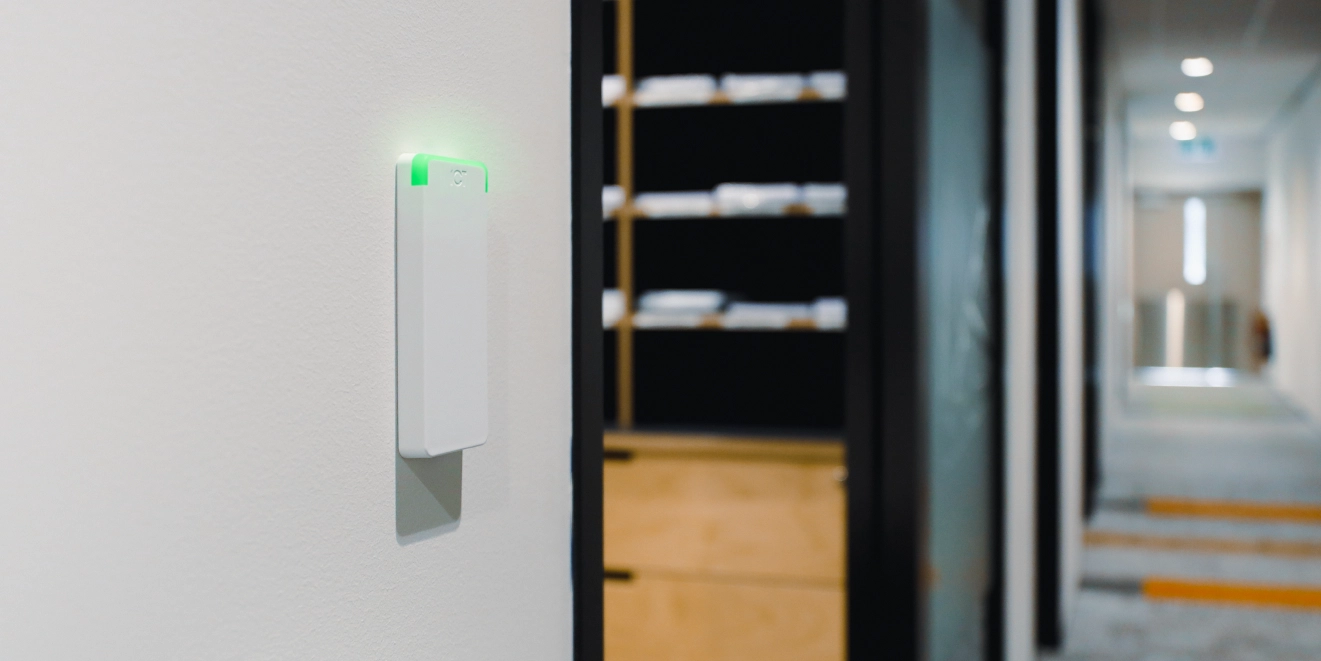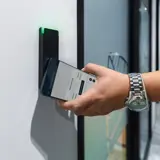While DAC puts control in the hands of each individual, RBAC manages access based on defined roles. DAC is also more flexible but more rigid to audit. RBAC is easier to scale and manage as your organization grows.

Physical Access Control Systems – Which Type Is Right for You?
When you choose the right type of physical access control system, it can make a huge difference to the security and efficiency of your business. Be it you're managing a small office, a larger facility or a multi-site enterprise, access control is essential for protecting people, as well as your property and information. But with different physical access control models available, it can be hard to know which one to choose.
This guide will talk you through the most common types of access control systems and explain how each one works, where it fits best, and what to consider as your organization grows.
What is physical access control?
Physical access control is the system that decides who can go where, and when. It uses credentials like keycards, mobile phones, PINs or biometrics to verify identity. Once verified, the system checks that person’s permissions and either grants or denies access.
The way those permissions are managed depends on the access control model you’re using. Some models are flexible and decentralized, while others follow strict central policies. Understanding the differences can help you make an informed choice.
The main types of access control models
There are three core models that are used by most systems; these are: Discretionary Access Control (DAC), Role-Based Access Control (RBAC), or Mandatory Access Control (MAC). Each of these models have their own strengths, risks as well as ideal use cases.

Discretionary Access Control (DAC)
Discretionary Access Control gives individuals the ability to decide who has access to what. For example, a department head might control access to their area and can add or remove people as they see fit. This model is quick to set up, simple to use and well suited to small, informal teams.
The downside is that it relies on individuals to manage access responsibly. Without central oversight, there’s a risk of inconsistent permissions or gaps in security. Someone may forget to remove access for a departing staff member or share access without proper tracking.
DAC is best for smaller organizations or low-risk environments where ease and flexibility are more important than strict control.
Role-Based Access Control (RBAC)
Role-Based Access Control ties access to a person’s job role rather than to the individual directly. Everyone in the same role receives the same level of access, and updates are handled centrally. For example, all warehouse staff might have access to loading docks and storage, while IT has additional access to server rooms.
RBAC brings consistency and scalability. If someone changes jobs or joins a new team, you simply update their role, and the system adjusts their access automatically. It makes onboarding and offboarding faster, ensures policies are applied evenly, and reduces the risk of human error.
This model suits medium to large organizations with multiple departments or locations. It’s efficient, easy to manage at scale, and provides a clear structure for administrators and users alike.
Mandatory Access Control (MAC)
Mandatory Access Control is the most restrictive model. Access rights are set by a central authority based on classification levels, and individual users cannot change them. This is common in high-security settings like government facilities or defense, where access to information and spaces must follow strict protocols.
In a MAC environment, everything is governed by rules. Users and areas are both assigned security levels, and access is granted only when those levels match. For example, someone with “confidential” clearance won’t be allowed into an area marked “secret” without the correct permissions from the top.
While MAC offers the highest level of control and auditability, it’s less flexible and requires more setup and maintenance. It’s most suited to organizations with elements like sensitive data or regulatory obligations that require strong oversight.
Matching models to real-world scenarios
A small creative agency might use DAC, allowing each manager to handle access for their team, which is fast and flexible for an environment built on trust.
A business like a fast-growing logistics company would benefit from RBAC. Assigning access based on roles like drivers, warehouse staff, and admin ensures consistency across multiple sites and teams.
A research facility working on confidential projects may rely on MAC to maintain strict access rules. All permissions would be managed by a central team to ensure compliance and security.
Many organizations combine models. RBAC may govern most of the building, while MAC is used for server rooms or labs. A hybrid setup allows you to balance control and convenience.

Integration tips for a smarter setup
Your choice of access model should work with your wider security ecosystem. ICT’s access control systems are designed to make this easy. You can assign roles and permissions from a central platform, apply rules like time-based access, and integrate your system with cameras or HR software.
As your organization grows, you may need to change how access is managed. ICT’s solutions give you the flexibility to adapt, whether you’re starting with DAC or moving into role-based or mandatory control.
Considerations When Choosing a Model
What’s the main difference between DAC and RBAC?
Are you able to use more than one model?
You can; many businesses use RBAC for general operations and MAC for areas requiring higher security. Blending models lets you match access levels to the sensitivity of each space.
Do you need software to manage this?
Good access control software should simplify your setup and maintenance. ICT’s systems enable you to manage roles, users, and integrations from one place, providing you with full visibility across your sites.
What To Do Next
Choosing an access control model should not be overlooked, as it’s integral to how your organisation functions on a day-to-day basis. Think about how many people need access, how often roles change, and how sensitive your information or spaces are.
If you’re ready to explore what access control could look like for your business, we can help. Read our Access Control 101 blog to get the basics, or get in touch to book a demo with our team.












